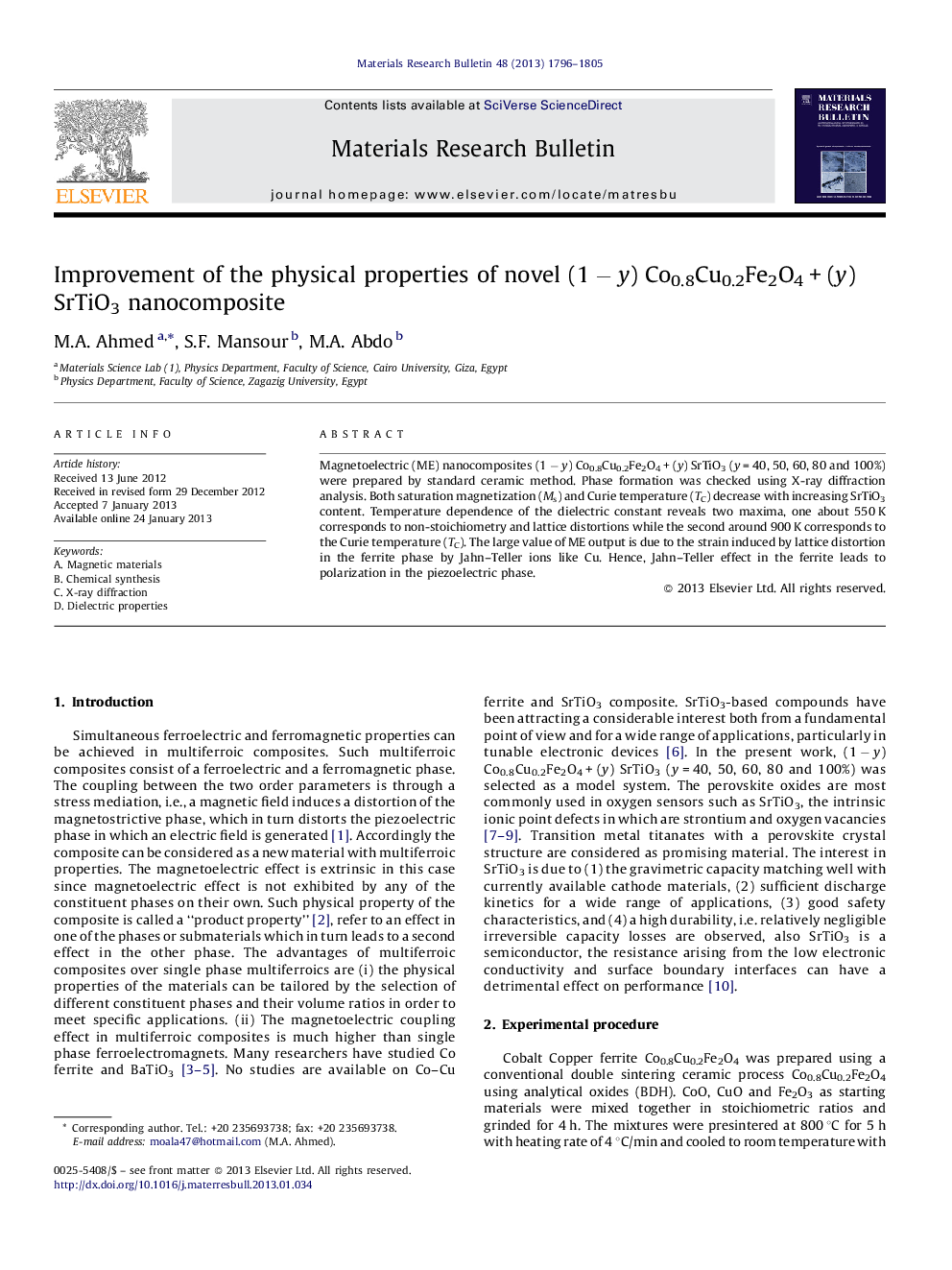| Article ID | Journal | Published Year | Pages | File Type |
|---|---|---|---|---|
| 1489188 | Materials Research Bulletin | 2013 | 10 Pages |
Magnetoelectric (ME) nanocomposites (1 − y) Co0.8Cu0.2Fe2O4 + (y) SrTiO3 (y = 40, 50, 60, 80 and 100%) were prepared by standard ceramic method. Phase formation was checked using X-ray diffraction analysis. Both saturation magnetization (Ms) and Curie temperature (TC) decrease with increasing SrTiO3 content. Temperature dependence of the dielectric constant reveals two maxima, one about 550 K corresponds to non-stoichiometry and lattice distortions while the second around 900 K corresponds to the Curie temperature (TC). The large value of ME output is due to the strain induced by lattice distortion in the ferrite phase by Jahn–Teller ions like Cu. Hence, Jahn–Teller effect in the ferrite leads to polarization in the piezoelectric phase.
Graphical abstractThe ME coefficient as a function of magnetic field for the composites (1 − y) Co0.8Cu0.2Fe2O4 + (y) SrTiO3 (y = 40, 50, 60 and 80%).Figure optionsDownload full-size imageDownload as PowerPoint slideHighlights► TC and Ms decrease with the increase of SrTiO3 concentration. ► The P–E hysteresis loops were observed for all compositions. ► The maximum ME coefficient was observed for the composite with 60% SrTiO3.
